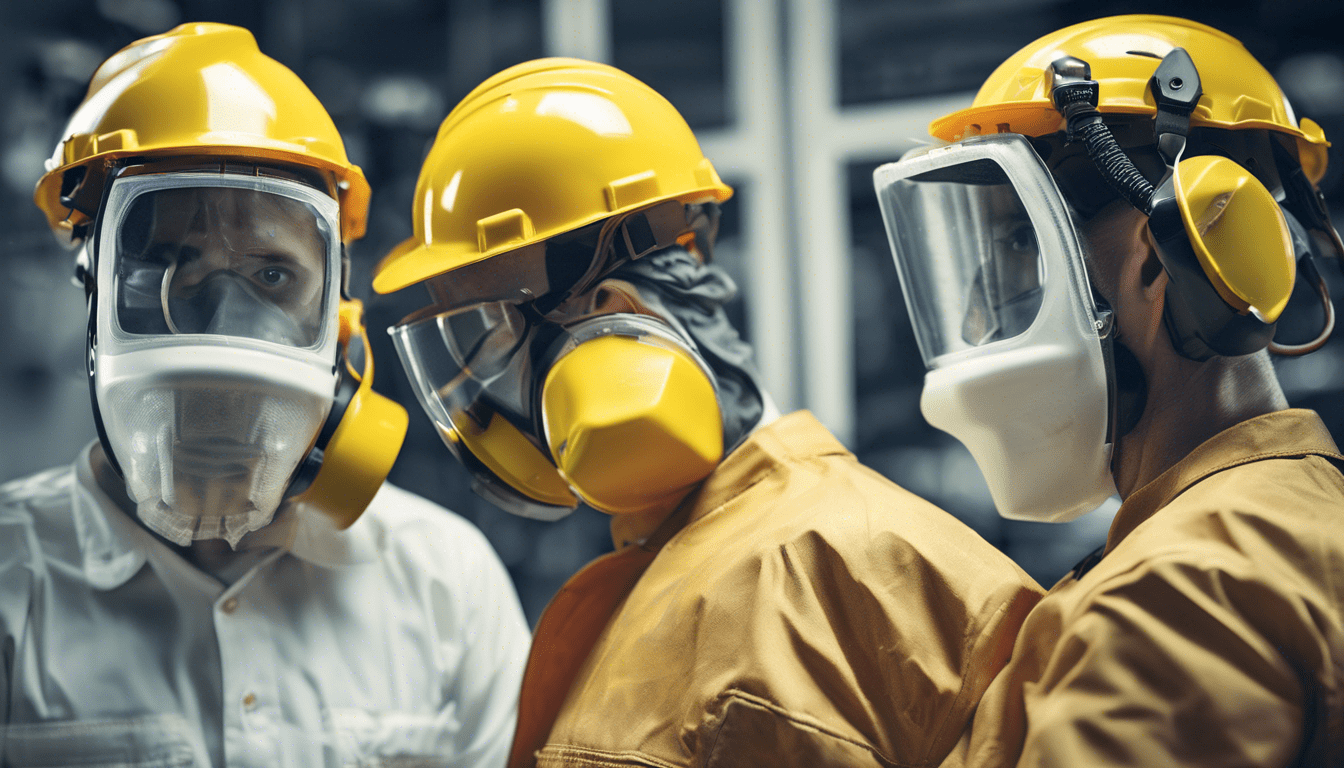Emerging smart PPE solutions are revolutionizing worker safety by integrating IoT sensors and advanced materials for real-time hazard detection. These innovations not only enhance protection but also boost productivity and foster a safety-driven culture. Exploring these technological breakthroughs reveals future trends and practical applications across diverse industries, offering a comprehensive view of how smart PPE transforms safety protocols and operational resilience.
Advances in Smart PPE Technology
Smart PPE technology has seen remarkable breakthroughs recently, fundamentally transforming workplace safety. Innovations now closely integrate IoT (Internet of Things) sensors directly into personal protective equipment, enabling continuous, real-time safety monitoring. These sensors collect vital data such as environmental conditions, worker biometrics, and location metrics, instantly alerting individuals and supervisors when risks arise.
Also read : How Can UK Businesses Adapt to Global Disruptions?
Alongside IoT integration, wearable sensor technologies have advanced significantly, allowing PPE to monitor heart rate, body temperature, and hazardous gas exposure with impressive precision. This data empowers timely interventions, reducing incidents before they escalate.
Looking ahead, future trends in smart PPE development promise even greater sophistication. Developments include artificial intelligence-driven analytics that predict hazardous situations and adaptive materials that respond dynamically to external conditions. The convergence of smart fabrics and miniaturized electronics will lead to PPE that is not only protective but also intuitive and comfortable.
In the same genre : What Impact Will Potential Trade Agreements Have on UK Businesses?
This evolving landscape highlights the importance of embracing smart PPE innovations as pivotal tools for enhancing workplace safety. Learn more here.
Key Features and Technologies of Leading Smart PPE
Smart PPE integrates embedded sensors designed to detect a range of environmental hazards, such as toxic gases, temperature extremes, and chemical exposure. These sensors provide real-time monitoring to alert users about dangers, significantly improving workplace safety. The technology enables timely intervention and risk mitigation, making smart PPE essential in hazardous environments.
Wireless connectivity and data transmission are critical components of smart PPE systems. They facilitate seamless communication between devices and centralized monitoring platforms, allowing safety managers to receive instantaneous updates on user conditions. This wireless communication enhances response times and enables data analytics to identify patterns in hazards over time.
Advanced materials play a vital role in modern smart PPE by combining durability with user comfort. Innovative fabrics and composites not only protect against physical and chemical risks but also ensure breathability and ergonomic fit. This balance ensures that smart PPE can be worn for extended periods without compromising protection or mobility.
The combination of sensor technologies, connectivity systems, and carefully engineered materials positions smart PPE as a frontrunner in workplace safety innovation. By integrating these features, smart PPE provides comprehensive protection while supporting user comfort and operational efficiency. Learn more here.
Industry Applications and Case Studies
Smart PPE has revolutionized safety protocols across multiple industries by integrating advanced technologies that enhance worker protection and monitoring. In construction, manufacturing, and chemical sectors, smart PPE provides real-time data on environmental hazards and worker health, leading to significant improvements in occupational safety.
Construction and Heavy Industries
In construction, smart PPE devices such as wearable sensors and connected helmets track vital signs and exposure to dangerous conditions like excessive heat or toxic dust. These technologies enable immediate alerts, preventing accidents before they escalate. A case study revealed a marked reduction in workplace injuries after implementing smart PPE solutions, demonstrating how real-time monitoring creates safer environments. However, challenges such as device durability and user acceptance remain key obstacles to widespread adoption.
Chemical and Hazardous Material Handling
Chemical industry workers benefit extensively from smart PPE equipped with sensors that detect the presence of harmful gases and chemical spills. This technology allows for quick evacuation and necessary decontamination, drastically reducing exposure-related illnesses. Case studies highlight enhanced incident response times and fewer health complications following smart PPE use. Integration difficulties with existing safety protocols and the cost of advanced equipment continue to challenge implementation in this sector.
Healthcare and Emergency Services
Smart PPE in healthcare and emergency services supports workers exposed to biological hazards and extreme environments. Sensors monitor vital signs and exposure to infectious agents, enabling early detection and intervention. Real-world applications have shown improved safety outcomes and faster emergency response. Despite these benefits, challenges such as maintaining hygiene standards for reusable devices and ensuring reliability during high-stress scenarios require ongoing research and development.
The adoption of smart PPE across these industries illustrates a transformative shift toward proactive, data-driven safety management. Learn more here.
Benefits of Smart PPE for Safety and Productivity
Smart PPE technology delivers remarkable enhancements in worker safety and overall productivity. By incorporating sensors and real-time monitoring systems, smart PPE enables enhanced hazard detection and instant alerts, significantly reducing accident risks on-site. For example, smart helmets equipped with gas sensors alert workers immediately to dangerous atmospheric conditions, preventing exposure to toxic elements.
Improved safety is closely linked to increased worker compliance and comfort. Unlike traditional PPE, smart variants are designed with ergonomic considerations and adaptive features that encourage consistent use. When workers feel comfortable and safe, productivity naturally increases. Smart gloves, for instance, provide tactile feedback and adapt to hand movements, reducing fatigue while maintaining protection.
An often overlooked but crucial benefit is the ability of smart PPE to support data-driven safety protocols. By collecting continuous data on environmental conditions, worker health metrics, and equipment usage, organizations can perform thorough incident investigations and identify patterns for risk mitigation. This data empowers safety managers to implement targeted interventions and optimize safety training, ensuring a proactive approach to risk management.
Together, these benefits combine to foster a safer, more efficient workplace where technology enhances both protection and performance. For companies eager to harness these advantages, integrating smart PPE is not just a safety upgrade—it’s an investment in operational excellence and workforce well-being. Learn more here.
Selecting and Implementing Smart PPE Solutions
Choosing the right smart PPE solutions requires a clear understanding of specific criteria that ensure product effectiveness and seamless integration. First, evaluate smart PPE products based on their sensor accuracy, durability, real-time data processing capabilities, and ease of use. These factors directly impact the quality of safety monitoring and overall worker protection.
Integrating smart PPE with existing safety systems is crucial to leverage data for proactive risk management. Solutions should be compatible with current infrastructure, such as safety dashboards and alert systems. Consider whether the smart PPE supports standard communication protocols to ensure a smooth connection without costly overhauls.
Proper training promotes user adoption and maximizes the benefits of smart PPE. Employees must understand how to operate the equipment and interpret feedback. Best practices include hands-on sessions combined with digital tutorials that emphasize safety features and maintenance procedures. Reinforcing these skills helps foster a culture of safety and technology acceptance on the job.
Selecting smart PPE is not just about the technology itself; it also involves strategic planning. Assess the ease of deployment, ongoing support, and system scalability. By thoroughly evaluating these factors, organizations can ensure that smart PPE solutions provide effective and sustainable safety enhancements.
Learn more here.



